Presentation on Prototyping: Methods, Tools, and Comparisons
VerifiedAdded on 2023/04/26
|7
|612
|376
Presentation
AI Summary
This presentation delves into the concept of prototyping, a crucial design process used to create preliminary versions of systems for evaluation and testing. It begins by defining prototyping and highlighting its benefits, such as refining customer requirements, reducing development costs, and accelerating development timelines. The presentation then differentiates between two primary types of prototyping: throwaway and evolutionary. Throwaway prototyping involves creating a model that is discarded after evaluation, while evolutionary prototyping develops the system incrementally based on user feedback. The advantages and disadvantages of each method are thoroughly discussed, including the ability of throwaway prototyping to detect problems early and the flexibility of evolutionary prototyping in research projects. Finally, the presentation introduces several prototyping tools, such as Solidify, Hotgloo, Webflow, and Flinto, that designers use to meet their needs. The content is derived from a student's presentation and is available on Desklib, a platform providing AI-based study tools and resources.
1 out of 7
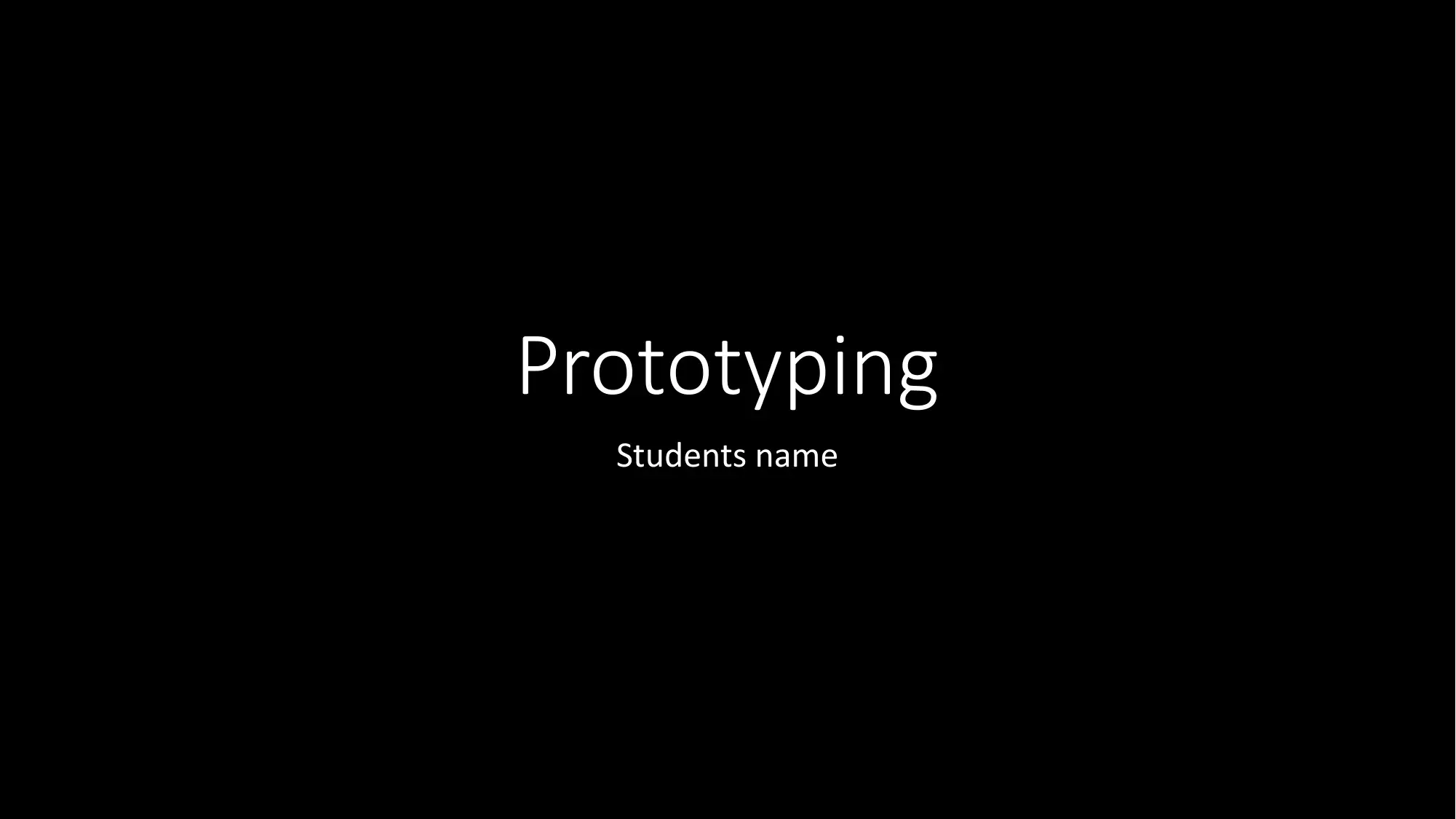
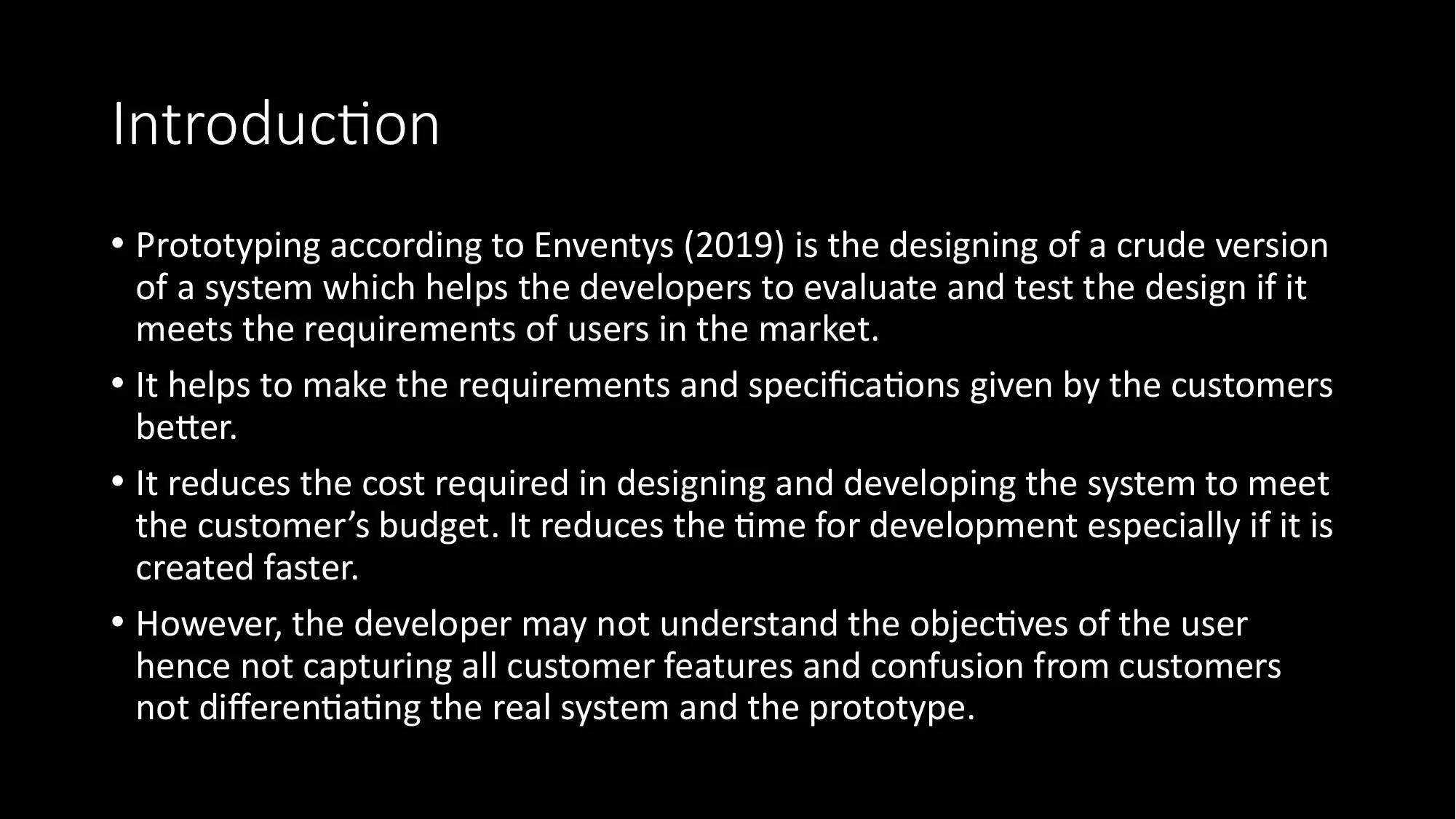
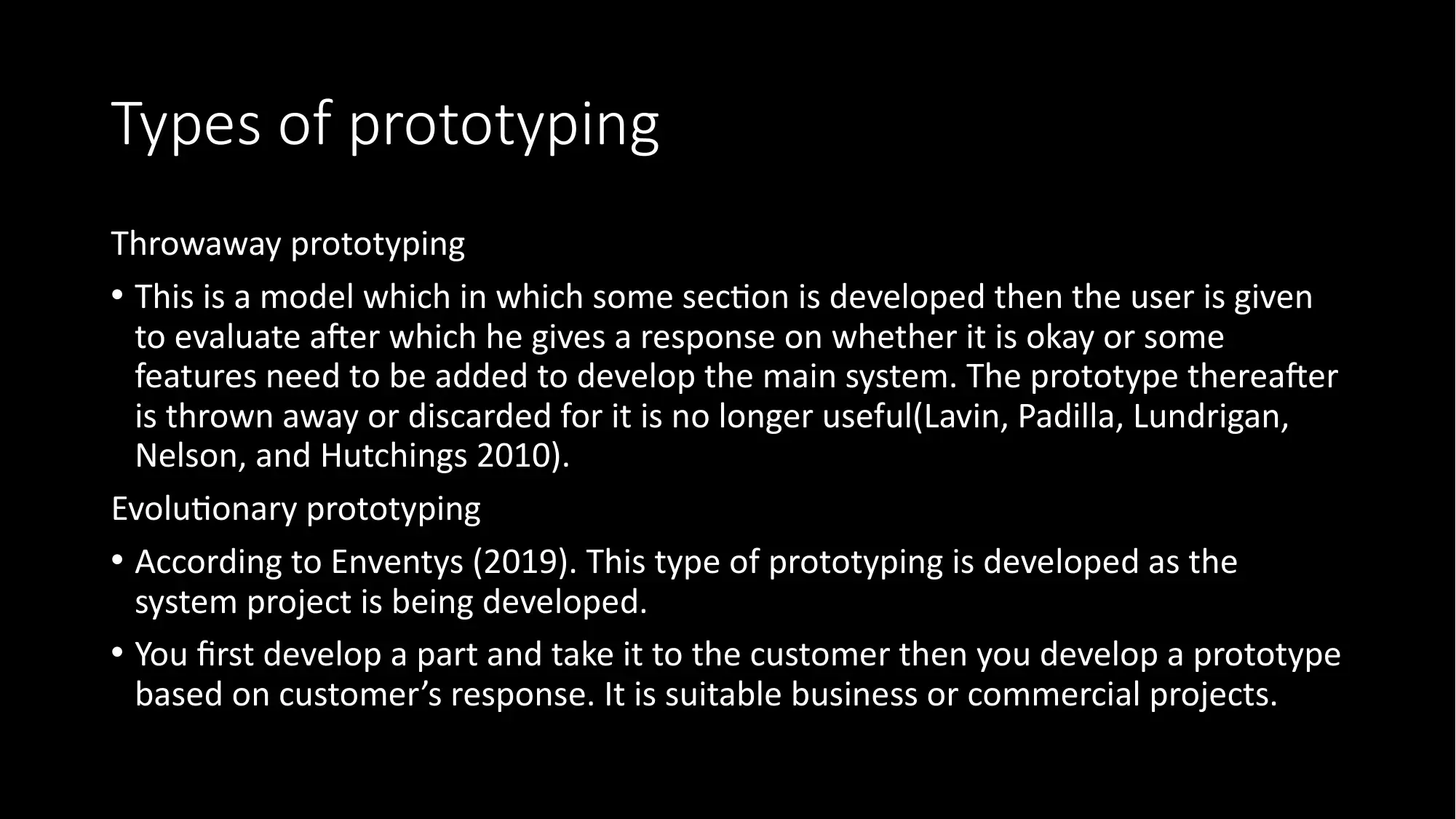

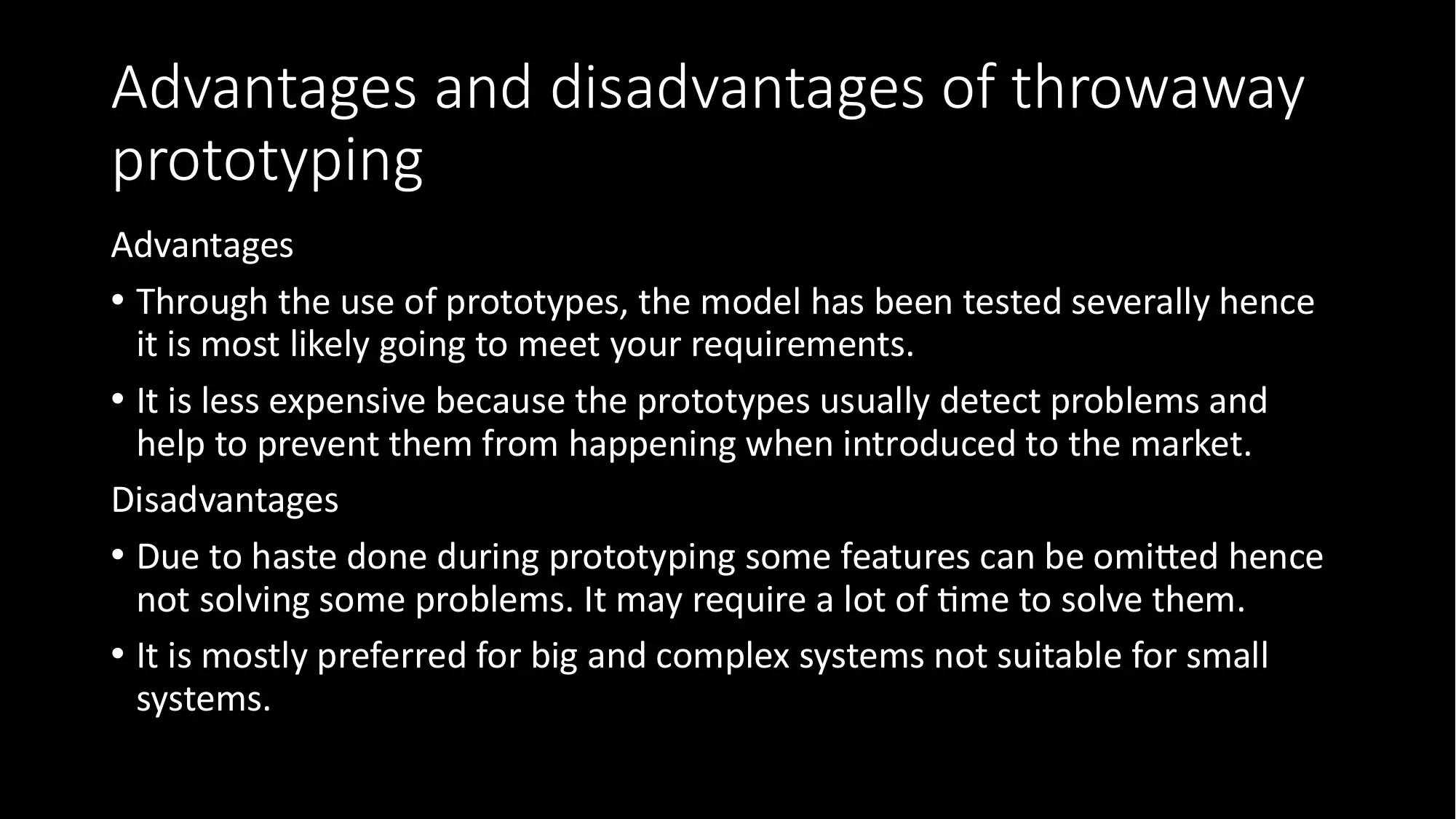
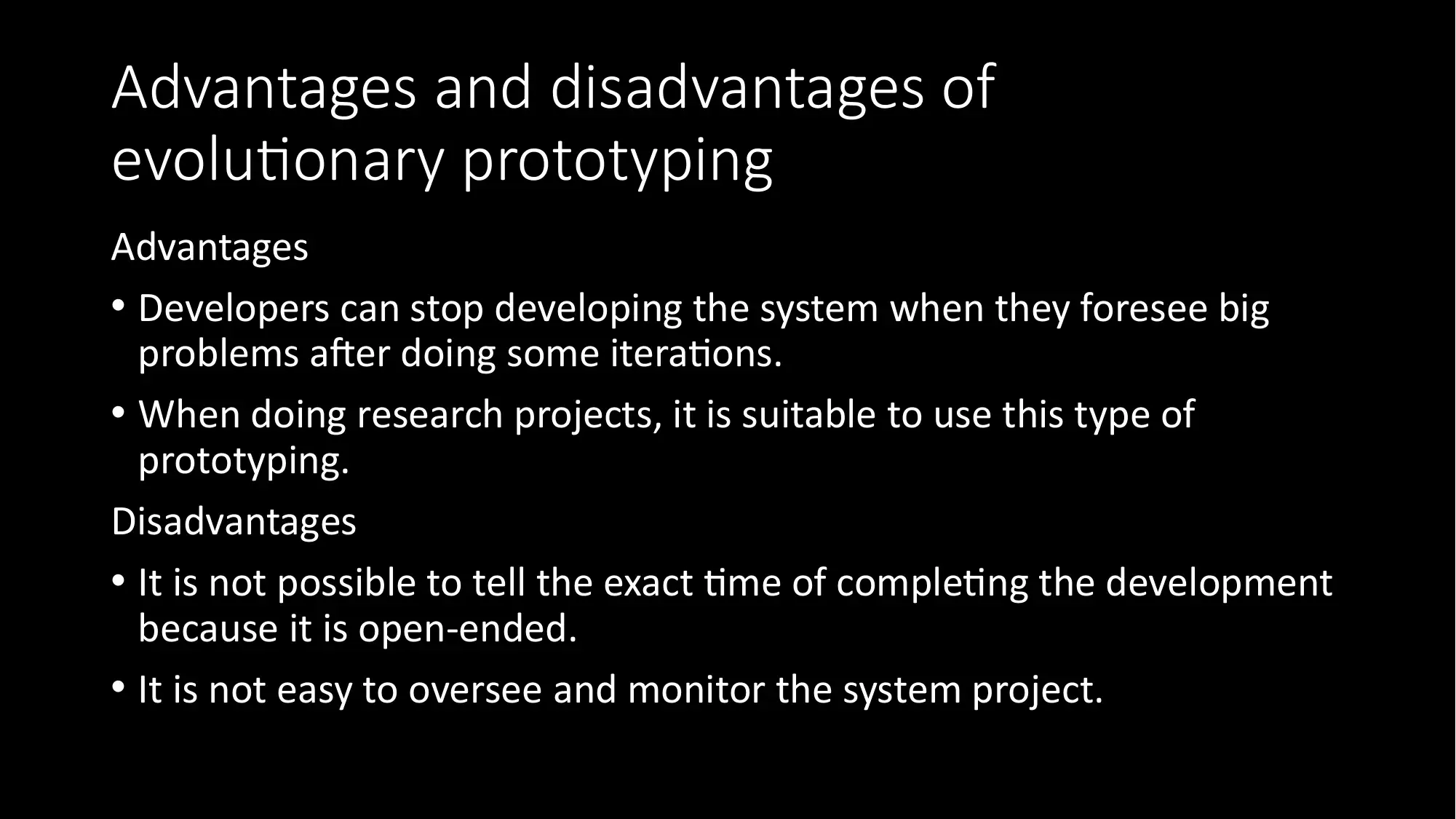
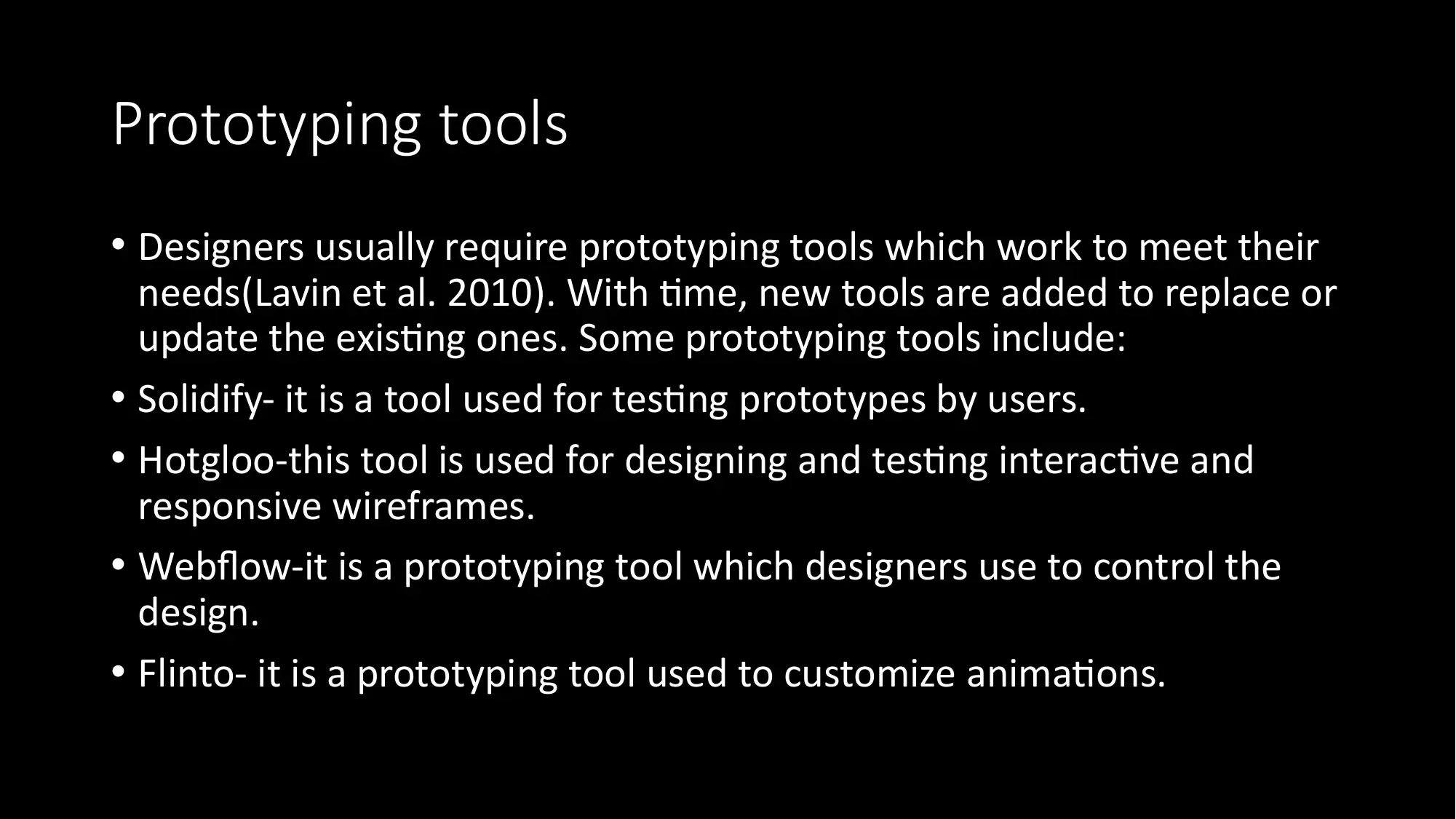
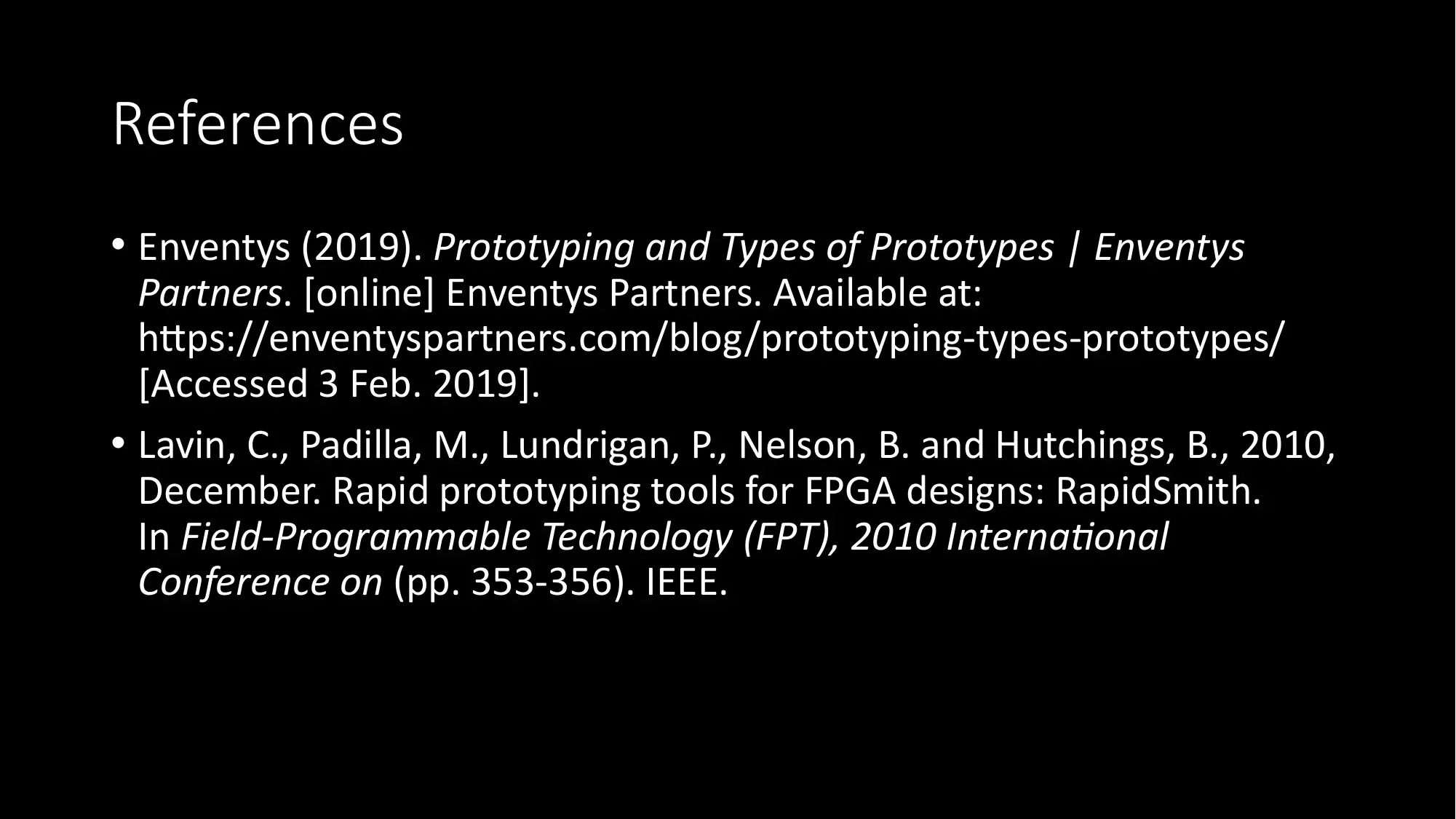



![[object Object]](/_next/static/media/star-bottom.7253800d.svg)